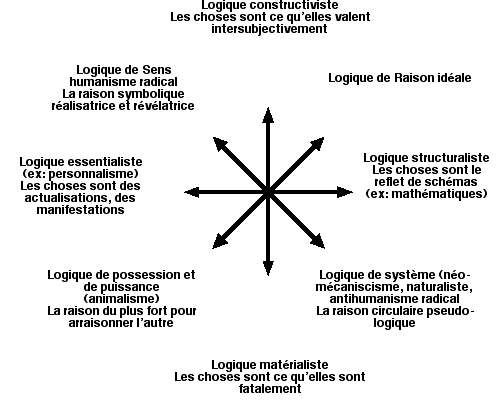
« The simple harmonic oscillator (SHO) is a mass connected to some elastic object of negligible mass that is fixed at the other end and constrained so that it may only move in one dimension. This simplified model approximates many systems that vibrate or oscillate : drum heads, human DNA, guitar strings, the quantum mechanical descriptions of an atom, the solar system dynamics, the stock market patterns, hélicoïdal tourguenist spirals, etc. The importance of this problem, however, lies in the fact that equations of a similar form arise when a particle moves through any region whose potential has one or more local minima : planetary and satellite motion, the classical description of an electron in orbit around a nucleus, pendulums, etc. Similar equations also arise in the study of LCR circuits : the type used in analog communications devices and electric power transmission. Chaos theory, as an unbrella term, describes a holistic process of adaptative transformation, where, over time, small instabilities may result in complex behavior, that may eventualy appear random and experienced as chaos by those accustomed to linear science. The best known example of chaos theory is « the butterfly effect »: briefly this means that, if one wants to bother with this particular chain of causation among all the myriads one might attend to, then a butterfly flapping its wings in Brazil will soon lead to a tornado in Texas. Edward Lorenz delivered his « groundbreaking » paper about this alliterative phenomenon as early as 1972. Subsequent theorists have identified laws which govern chaos so understood (which surely ought to mean that chaos proper should be located somewhere else) and these laws, mathematically expressed, have been what « chaos science » has been exploring over the past twenty years or so. A better literary analogy would be with Lucretius’ ancient atomism. « Chaos » theory is about what Lucretius meant when he defined the energizing principle that differentiated his Epicurean universe from stasis as the « exiguum clinamen principiorum, » that minute swerve from the parallel paths of the first atoms that brings the world of stuff into being. Tourguenists hélicoïds are another analogy that interferes with many other unknown patterns, that we have to discover. »
Pr. Druunörst Gulkstra-Grüll, second press conference, oktober 6th 2007.



